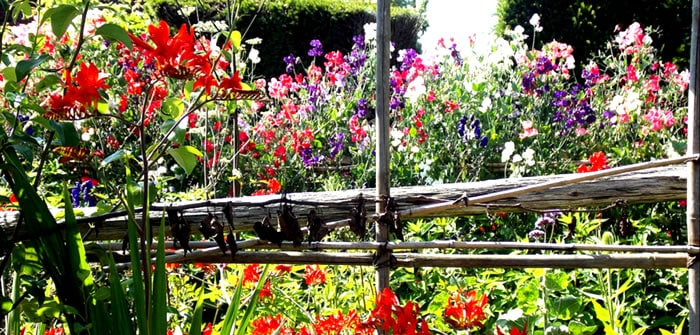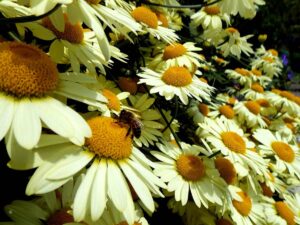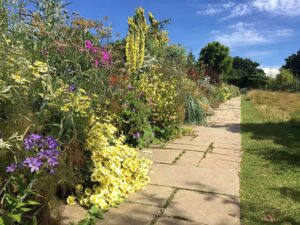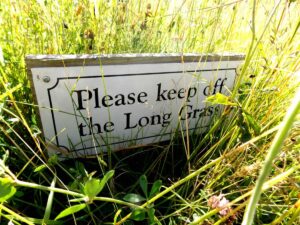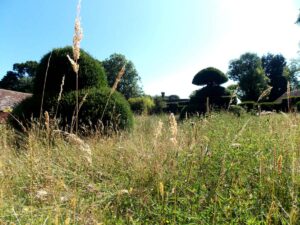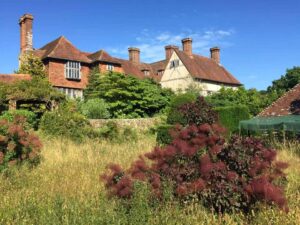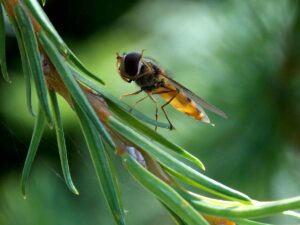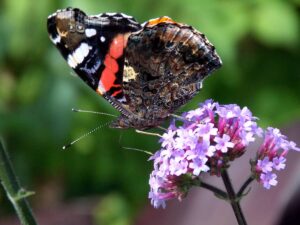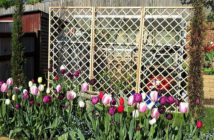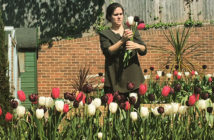As a young boy I would crudely draw out designs for my small vegetable plot, including a rockery and pond (which of course were far too ambitious for a 7 year old) and there in my childhood those design ideas remained – parked through school and lost on my journey into adulthood and the world of business & digital marketing. Vegetable growing has been a continual indulgence throughout my life (and more recently at my allotment) but over the past 18 months my interest in garden design has been rediscovered… there has been an awakening.
I find that there are parallels between designing the best website journeys (what we techies call User Experience) and the insight needed to design a garden experience that enthrals visitors with vivid colours and tantalising fragrances. And so it is with much joy that I have begun to frequent the most renowned gardens in the UK (if not the world) with trips to Sissinghurt, Hidcote, Kew, Stow, Herstmonceux and Beth Chatto notched up last year. When I discovered that I could attend a ‘Behind the Scenes at Great Dixter‘ half day session I grabbed the opportunity with both hands (and of course my credit card for the £45 fee).
The day I had so been looking forward to arrived on Monday, and what fortuitous weather it brought with it; 28C ~ extra water, a hat and sun cream were certainly required if I was to be comfortable on my 3-hour midday tour. Great Dixter is in Kent, in the direction of Hastings and near several picturesque towns all of which end in a ‘hurst’ – I couldn’t resist shouting “poop poop” out of the car window in the style of Mr Toad as I made my way through this scenic route towards my destination (onlookers would have thought me quite mad, and they’d be quite right). I arrived in good time, had a quick wander about the entrance – slightly concerned that the official signs said ‘House and Gardens Closed’ but as it happens that was one of the biggest bonuses of attending this tour – only me, the other attendees and the gardeners hard at work were going to be at Great Dixter that afternoon – what joy!
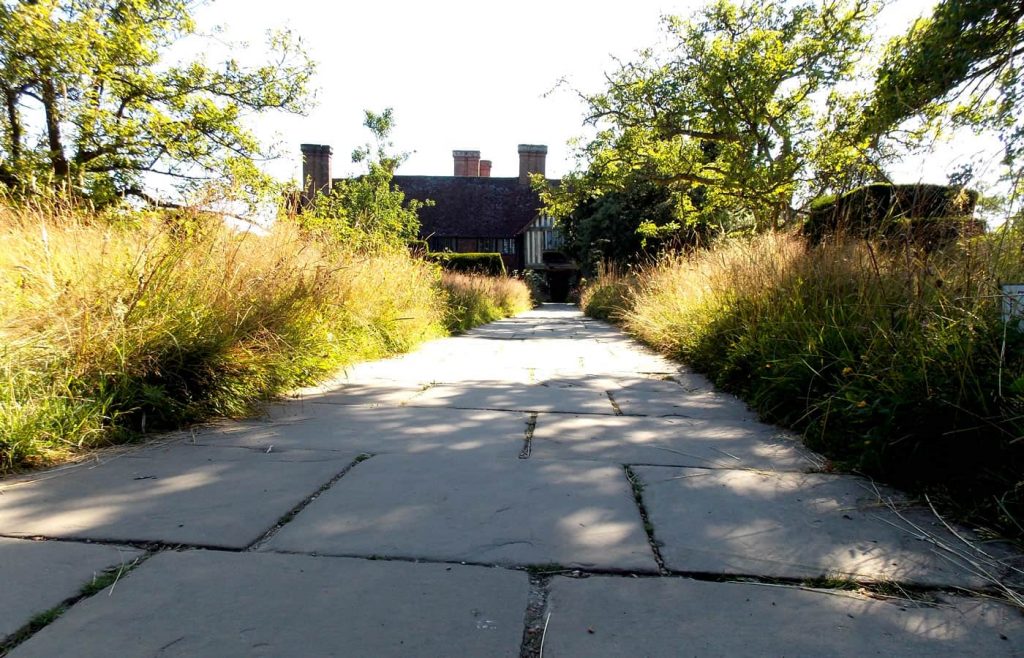
Our highly knowledgable, enthusiastic, friendly and well-spoken guide through the gardens of Great Dixter was Rachael Dodd. After some tea and wonderful home baked cake we began the main tour at the front of the house, entering the Peacock Garden with its fine topiaries, tall grasses, hollyhocks and most memorable ‘Angel’s Fishing Rods / Dierama pulcherrimum‘. Rachael explained that Great Dixter is quite unusual in the way that they plant – the objective being much less about a big floral crescendo and much more about a year round level of colour and activity. We wandered from there, through to the Prairie with its giant compost heaps and ornamental squash and into the absolutely stunning Orchard Garden (pictured below). Note. there’s a beautifully illustrated map of Great Dixter available here).
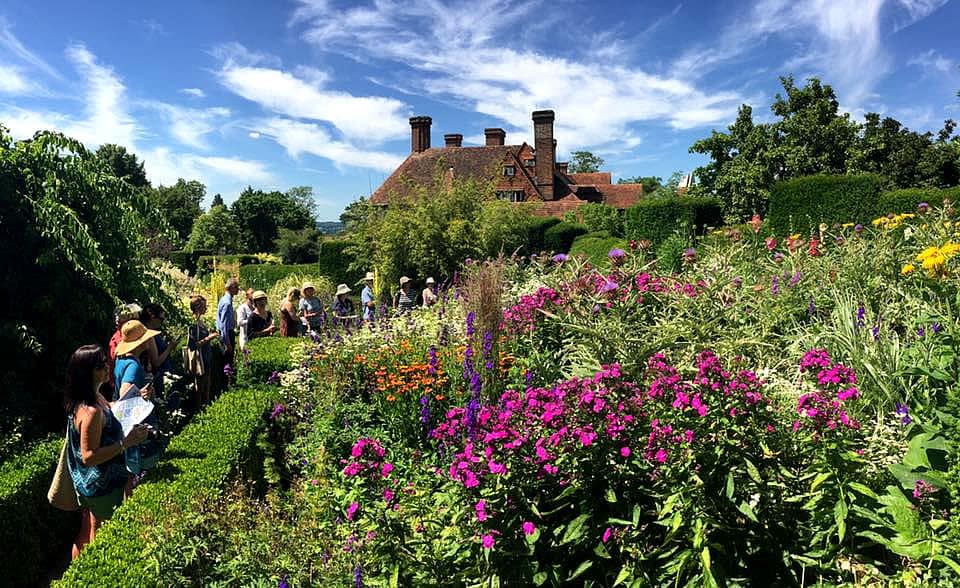
We progressed from there through to the absolutely magnificent Long Border, full of colour, stunning Phlox in bright pink, yellow daisies and my favourite ‘take-away’ – some tall posts erected with the sole purpose of providing support for climbing clematis; MrsGrow is going to wonder what on earth I am doing when I borrow this idea for the garden at home. If memory serves me correctly at this point it was approaching 2.30pm and with many of us fighting for the shady spots (so as not to pass out in the heat) we proceeded to the Great Barn for some cool shade and refreshment; sparkling elder-flower on ice, oh and more cake.
Once our temperatures had lowered, thirsts were quenched and tired legs rested we found ourselves beside the Sunken Garden (see below), a walled area near the Great Dixter Oast House which contains a pond (as you might imagine for a sunken garden). Our Great Dixter guide Rachael was always pleased to answer questions (mostly to identify plants and their growing habits). I noticed that some among us had notebooks and pencils with which to feverishly make detailed notes and I felt quite ‘naked’ for only having my iPhone and camera but that said I think any more than those and I may well have missed out on the enjoyment of being at Great Dixter in itself – which was full of breath-taking moments to be lived in the moment.
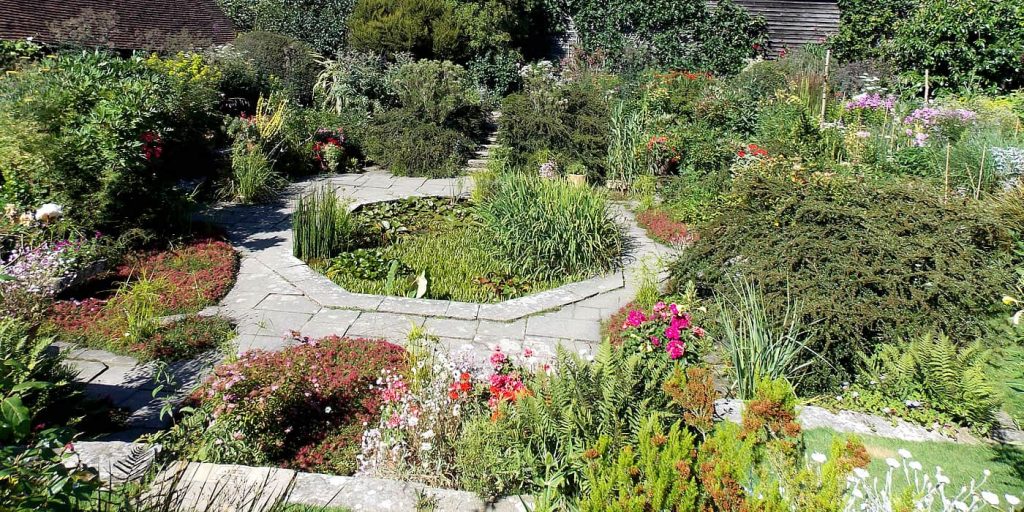
Around to the side and rear of the main house are the Blue Garden, Upper Moat and Topiary Lawn, we were informed that the Blue Garden is so called because of the blue hydrangeas that once grew there, though now mostly pink due to the natural soil acidity (in previous years it had been manually altered to keep them blue). A few steps down and we were met with the sound of many grass hoppers enjoying the warm sunshine and tall grasses of the Topiary Lawn – a wild meadow area, well kept as a lawn in a bygone era under Christopher Lloyd but now a perfect location for less well manicured plants. Later, after the tour had finished and we had free time to roam Great Dixter alone I found myself here just taking in the house and the chirping grass hoppers – I like to try and capture a moment on a day like this, something I can use in meditation at a later date.
Our final destination by around 3.15pm was the Exotic garden, here there once grew roses which Christopher Lloyd famously removed after the death of his mother, his apparent discernment causing some fuss within the horticultural upper-echelons of the era. Today the Exotic garden still has some roses growing there, but also palms, banana plants, pines and even Dhalias – all of which seemed to draw in a number of insects – so clearly they felt quite at home in the perceived mish-mash of plant types. One of the characteristics of Great Dixter is that the planting style is not necessarily what you’d call ‘traditional’ – many plants thriving together look somewhat out of place but this is part of Christopher Lloyd’s legacy of ‘trial and error’ that today’s Head Gardener Fergus Garrett continues.
When the tour had ended I relished the chance to wander free for two hours longer, often alone in one of the gardens – just me, my camera and the butterflies. I love how closely the plants grow into and over the paths which criss-cross the gardens in front of the house, as you navigate your way around you are forced to brush past the plants and it has dawned on me that many other gardens lack a personal charm because of the absence of this touch and interaction. I also very much enjoyed being amongst the gardeners whilst they were at work, a number of times I came across Fergus Garrett issuing instructions to the team he has working with him and I also found listening in to be quite useful.
Presented below is the full gallery of photographs that I took at Great Dixter, they are all connected via Flickr, click to enlarge or see many more of my photos from other gardens on my flickr profile. Keep an eye on the ‘What’s On‘ tab at the Great Dixter website if you’d like to attend a Behind the Scenes at Great Dixter tour yourself.
Great Dixter


